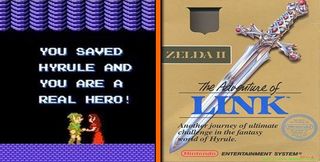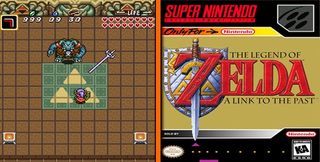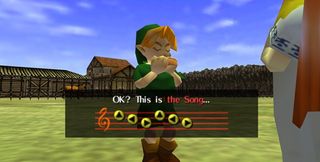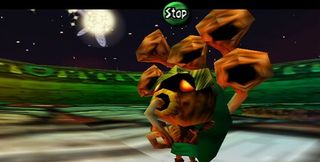Fourscore and loads of years ago, when many of us were but an aroused twinkle in our parents’ eyes, a certain legend was born. Yup, that’s right, 25 years to this very day, Link and The Legend of Zelda were shoved into the ports of our Famicon Disk Systems. Recently,Nintendo President Satoru Iwata has discussed the possibility of releasing a special 25th anniversary collector’s compilation, similar to what was done with Super Mario All Starslast year. While you probably shouldn’t stave off oxygen waiting for that, you’re more than free to accompany us down Recollection Alley, as we look back at a quarter of a century of incredible Zelda games.
The Legend of Zelda (Famicom Disk System, 1986)

Once upon a time when Sigourney Weaver was busy fighting extraterrestrials with severe saliva problems and Betamax tapes were all the rage, Nintendo released its legend.Thefugly-ass pixels above may not look like much now, but all the seeds for the dynasty were planted here. Searching for pieces of the fragmented Triforce. Protecting Hyrule from the malevolent Ganondorf. Saving some chick whose name has temporarily abandoned us. It all started here for our beloved tunic-sporting elf boy.
The Adventure of Link (NES, 1988)

Like that weird third cousin your family never talks about, whosurvives on fish heads while living in an attic, this black sheep of the Zelda herd is rarely discussed in polite company. Unlike its predecessor, and almost every sequel that would follow it, The Adventure of Link mainly focused on side-scrolling levels, rather than traditional open-ended exploration. It’s best just to shove another half-eaten rainbow trout in this one’s mouth and move swiftly along.
A Link to the Past (SNES, 1991)

One of the high points of the series, even by Zelda’s stupidly lofty standards. Returning to the formula established by the original, the game sees Link putting a 16-bit smackdown on Ganon’s nefarious plans. Designed, directed and written by Miyamoto himself, it’s the title that really put Link’s green PJs on the global map.
Link's Awakening (Game Boy, 1993)

Originally intended to be a handheld spin-off of A link to the Past, what started as an after hours project for a small band of Nintendo staff quickly grew into a new, bespoke project for Game Boy. The first portable title in the series, it is one of the few Zelda games that isn’t set in Hyrule. Hell, it only contains a passing mention of our favourite dainty royalty, too. Instead, the game takes place on Koholint Island. The loss of beloved characters might have stung, but at least Nintendo provided ointment in the form of cameos from Yoshi and Kirby. Oh, and18 year-old spoiler alert! The whole thing is a dream.
Ocarina of Time (N64, 1998)

Often heralded as the Greatest Game of All Time TM, Ocarina brought Link and co. screaming into the 3D era. With Hyrule now a stunning open world you could explore on your awesome equine Epona, gamers everywhere wereleft awestruck by the sheer breadth and ambition of the N64 classic. Honestly, if fighting huge spider beastie Gohma wasn’t enough to make your late 90s eye holes weep with excitement, you were clearly deader than deep-fried dodo.
Majora's Mask (N64, 2000)

Perhaps the darkest game in the series, the follow up to Ocarina transported Link to the parallel world of Termina. The twisted adventure was basically Nintendo’s answer to Groundhog Day. Just replace jokes about Bill Murray offing himself with a 72 hour time loop and a seriously pissed off moon that’s going to destroy the world if Link doesn’t keep rewinding time. The ability to transform Link into a Deku Shrub, Goron or Zora was just the delicious blocky polygonal icing on the cake.
Oracle of Ages/Oracle of Seasons (GBC, 2001)

May Jeebus look down on and bless Nintendo, because it’s always willing to try inventive stuff, whether it fully comes off or not. Take these two GBC gems. Essentially damn near identical experiences, the two versions could interact with each other with the use of in-game passwords or the Game Boy Link Cable. At first, the Shigger intended the titles to appear as a brand new trilogy. But this idea was eventually scrapped when the proposed password system that was going to link the titles proved too tricksy.
A Link to the Past %26amp; Four Swords (GBA, 2002)

The GBA version of the SNES classic contained an entirely new multiplayer combiningfour annoyingly adorable Links. This new mode would go onto inspire the co-op-focused Four Swords Adventures on Gamecube.


